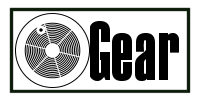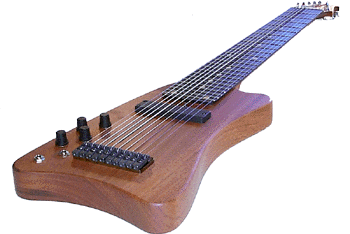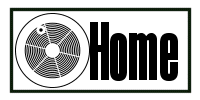



I get questions like this all the time, especially about the ADG. To save some e-mail typing I'll write about it here:
Q: How does the ADG compare to (insert brand here) tapping instruement?
A: It's like this. It's really not safe for me to make comparisons of the ADG with instruments from other manufacturers, for a lot of reasons. I don't know what kind of music you want to make, what sound you expect, etc. Furthermore, some of these manufacturers have two or three models with different tonal options, which I may not familiar with, though I played one very well known tapping instrument from 1993 until 1998 on many many gigs. I don't play that one anymore. But what I will say is that the ADG is my first choice when I take the concert stage, it has a great, solid fundamental tone, and I find it to be the most comfortable tapping instrument to play of all of them (bar none), especially, in the case of the 10 string, with the Slider strap. I think that the biggest advantage Warr guitars have over ADG's is that Warrs have a number of great tones (through pickup selection switch, tone controls, etc.) while the ADG has one great tone, which you can effect, distort, etc., with your amp rig. I also find the simplicity of design a bonus in the ADG. Sometimes less is more. SInce ADG and Warr come from the same shop, you know the ADG's are made to a high standard, but with a more basic design, compared to their Warr cousins.
Q: What Tone Woods do you prefer?
A: It depends. Maple and Swamp Ash are a great combination in a guitar. Both my 8 strings have this set up. It is bright with a really clear bass sound. This is a modern bass tone and a guitar tone that cuts when clean. This is 'old-school' guitar technology, proven through decades of electric axe construction, but it is tried and true. I also have the all-mahogany ADG. The distortion on this baby is awesome, for that over the top, midrangey, mellow, Santana/Fripp/Anastasio sound. Infinite feedback, with the speakers cranked, is a real joy on this instrument. The bass is also mellow, and great with tube amps for a 60's sound (Phil Lesh, Jack Cassady, etc.). This might not be ideal for a modern bass tone, but I like it for old school rock. I think that the Bartolini pickups contribute a lot to the distnictive sound of all Warr/ADG's. The next time I go into the studio I am looking forward to blending different sounding tap guitars on record, for a true tapping TONE experience.
Q: How about active circuitry? Neck Through?
A: I think that passive circuitry is better for distortion, and active is better for clean. That's just my opinion, and others may differ (many have the exact opposite view!). When distorted, I like the way the tone of passive pickups break down a bit under the weight, while an active pickup seems more compressed. For that matter, I find that the overall dynamics are a bit wider and under the control of my fingers with the ADG passive circuitry... but sometimes I wish the signal had a bit more gain. Anyway remember that your sound is still in your hands so don't go making excuses "I'd sound better if only I had a ..." (thats a message to my students!). I don't think 'neck through' makes too much differnece. My bolt on ADG 8 has the best sustain I have ever heard in a tap instrument. If you want more sustain, try heavier strings. Those neck through laminated stripes sure look cool, though :).
